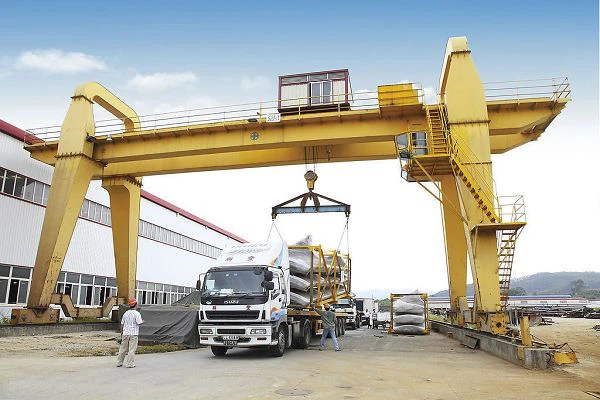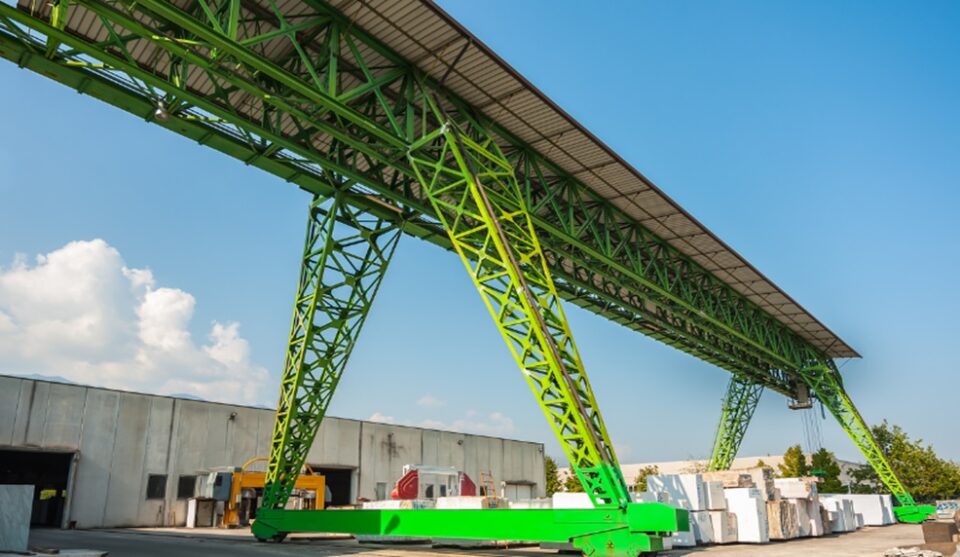When selecting the best mobile A-frame gantry crane for your operations, understanding the critical factors involved in making an informed decision is crucial. This listicle outlines the essential considerations and guides you toward making the right choice by focusing on quality, reliability, and trusted suppliers.
1. Assess Your Operational Needs
Before diving into the selection process, clearly define your operational requirements. Consider the type of loads you need to lift, the environment in which the crane will operate, and the frequency of use. Understanding these factors will help you determine the ideal specifications for your mobile A-frame gantry crane, including weight capacity, height, and span. Selecting a crane tailored to your needs ensures efficiency and safety in your operations.
2. Evaluate the Build Quality and Materials
The build quality and materials used in constructing the gantry crane significantly impact its durability and performance. Mobile A-frame gantry cranes are often constructed from aluminium or steel, offering different benefits. Aluminium cranes, such as portable aluminium gantry cranes, are lightweight and corrosion-resistant, making them ideal for environments where mobility and weather resistance are priorities. On the other hand, steel cranes provide greater strength and are better suited for heavy-duty applications. Always choose a crane with robust construction to ensure long-term reliability.
3. Consider the Mobility and Flexibility
Mobility is a defining feature of A-frame gantry cranes, but not all cranes offer the same level of flexibility. Look for easy cranes to manoeuvre within your workspace, whether equipped with wheels, casters, or other mobility features. The ability to adjust the height and span of the crane adds an extra layer of versatility, allowing it to adapt to various tasks and environments. Opting for an easily transported and assembled crane will save time and reduce operational disruptions.

4. Examine the Crane Components
The quality and compatibility of the crane components are critical to its performance. Pay attention to the hoist, trolley, and wheels, as these are the most used parts of a gantry crane. High-quality components ensure smooth operation and reduce the likelihood of breakdowns. Additionally, ensure that the crane’s components are compatible with your existing equipment and can be easily maintained or replaced. Trustworthy gantry crane suppliers will offer detailed information on the components used in their cranes, helping you make an informed decision.
5. Check the Supplier’s Reputation
The reputation of gantry crane suppliers is a strong indicator of the quality and reliability of their products. Research potential suppliers and look for those with a proven track record in the industry. Reviews, testimonials, and case studies can provide valuable insights into other customers’ experiences. Suppliers with a strong presence in specific regions, such as gantry crane suppliers in Singapore, often have deep knowledge of the local market and regulations, ensuring that their cranes meet regional standards. A reputable supplier will also provide excellent customer service, including after-sales support and technical assistance.
6. Ensure Compliance with Safety Standards
Safety is paramount when operating a gantry crane. Ensure that the crane you choose complies with safety standards and regulations. This includes checking for certifications and thoroughly inspecting the crane before purchase. A reliable supplier will provide detailed documentation on the safety features of their cranes and offer guidance on proper operation and maintenance. Regular inspections and adherence to safety protocols will help prevent accidents and extend the lifespan of your equipment.
7. Factor in the Total Cost of Ownership
While the initial purchase price is essential, it’s crucial to consider the total cost of ownership over the crane’s lifespan. This includes maintenance, repairs, and potential upgrades. A cheaper crane may cost more in the long run if it requires frequent maintenance or replacement parts. On the other hand, investing in a high-quality crane from a reputable supplier may result in lower maintenance costs and a longer service life. Consider the crane’s efficiency, durability, and ease of maintenance to determine its actual value.
8. Request a Customised Solution
Every operation has unique requirements; sometimes, more than an off-the-shelf solution may be needed. Many trusted suppliers offer customised mobile A-frame gantry cranes tailored to specific needs. Whether you require a particular size, capacity, or additional features, working with a supplier who can provide a bespoke solution ensures that your crane will perfectly fit your operational demands. Discuss your requirements with the supplier, and don’t hesitate to ask for a tailored recommendation.
9. Evaluate the Supplier’s After-Sales Support
After-sales support is an essential aspect of any significant equipment purchase. Reliable gantry crane suppliers provide comprehensive after-sales services, including installation, maintenance, and repairs. They should also offer training to ensure your team can operate the crane safely and efficiently. Good after-sales support extends the lifespan of your crane. It ensures that it remains in optimal working condition throughout its use.
10. Make an Informed Purchase Decision
Finally, making an informed purchase decision involves weighing all the above mentioned factors. Take the time to compare different cranes, suppliers, and their offerings. Ensure your chosen crane aligns with your operational needs, budget, and safety requirements. By doing so, you’ll invest in a mobile A-frame gantry crane that delivers long-term value, efficiency, and reliability for your business.
For more information, contact Shin Guan today.

